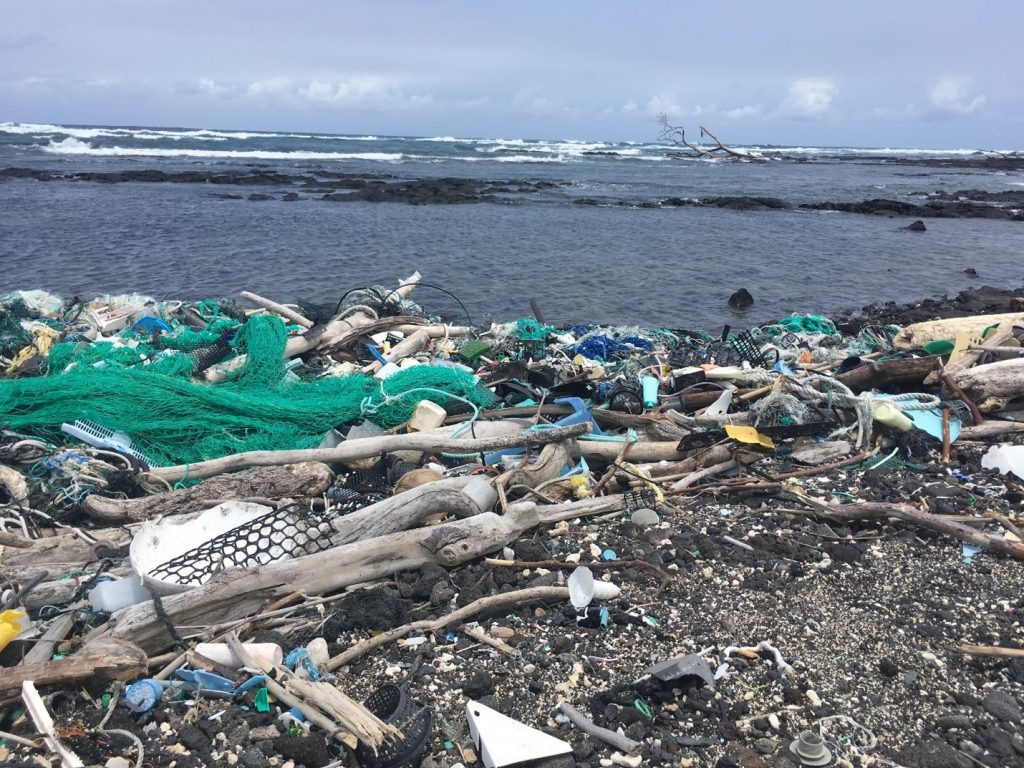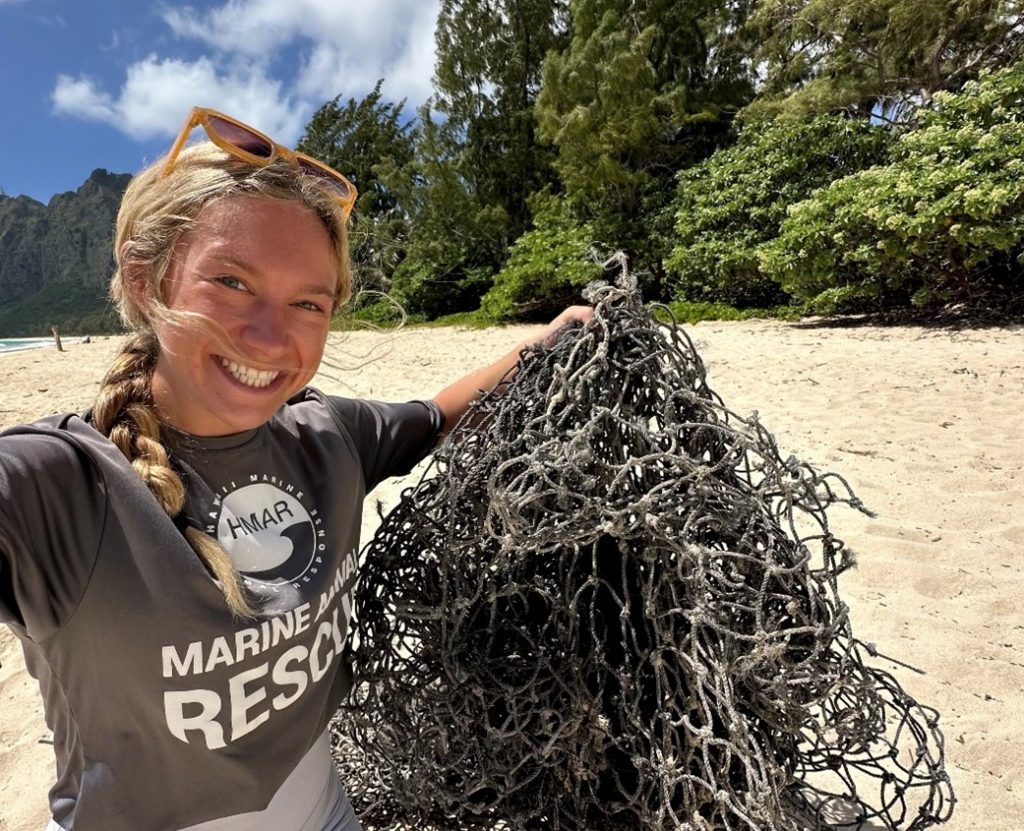Marine debris hotline available for rapid removal of abandoned fishing nets, lines
The Protected Species Program with the Division of Aquatic Resources issued a reminder today to the public, encouraging use of the statewide marine debris hotline and reporting website.

Beachgoers are encouraged to immediately report hazardous nets and marine debris to the hotline at (833-4-DA-NETS) or 833-432-6387, or the website.
Photos can be uploaded, and reports can include as much information as possible. Once a report is received, a rapid response team is deployed to remove the nets as quickly as possible, before they drift back into the open ocean.
Link to the DLNR marine debris response and removal reporting form: https://dlnr.hawaii.gov/dobor/reportmarinedebrishawaii/
“Abandoned, lost, and discarded fishing nets can ruin essential habitat like coral reefs, as well as entangle marine life such as turtles and humpback whales,” according to department officials.
The Marine Debris Rapid Response Hotline is meant for the rapid removal of abandoned fishing nets and fishing lines that can entangle and harm Hawaiʻi’s endangered wildlife and coral reefs. The goal of this hotline is to remove the debris before an animal can be entangled and before the net washes back out to sea, which can impact human and wildlife safety alike.
The DAR Protected Species Program along with several nonprofit partners and the Division of Boating and Ocean Recreation will work together to remove marine debris from Hawaiʻi’s near-shore reefs and shorelines as soon as possible.
DOBOR receptacles in most of its harbors are used for discarded monofilament fishing lines/nets. DOBOR works with many partner agencies, providing drop-off locations near its boat ramps for collected marine debris. DOBOR also contracts withvendors to perform in-water salvage of large marine debris, including shipping containers, grounded and derelict vessels, etc. It is continuously working to create rules to reduce the impact of marine debris. The DOBOR website hosts the Marine Debris Report Form that aids the marine debris community in locating and tracking net masses and large debris within our ocean waters.
DAR’s Protected Species Program contracts with partner agencies on Oʻahu – The Hawaiʻi Marine Animal Response as well as on Hawaiʻi Island for both shoreline marine debris removal with the Hawaiʻi Wildlife Fund and in water fishing line and lead debris removal with Ocean Defenders Alliance.
“HMAR is proud to be DAR’s designated partner on Oʻahu for the Marine Debris Rapid Response program. In the short time we’ve been responding under the program we’ve been able to respond to several instances of derelict fishing debris on land and at sea that posed a serious threat to our marine protected animals like Hawaiian monk seals, sea turtles and seabirds.” said Jon Gelman, HMAR president and founder. Since starting response operations about eight weeks ago, HMAR has received nine contacts about marine debris, two of which were sent to other State of Hawaiʻi agencies due to the type of debris involved and HMAR was activated seven times to respond on shore or in nearshore waters.
One form of marine debris Hawaiʻi has been experiencing an uptick in is the amount of foreign and domestic fish aggregating devices, or “FADs”, adrift in nearshore waters and washing up along our coasts. FADs can be made from a variety of natural or manufactured materials including bamboo, plastic pipes, mesh nets or lines, and buoys. FADs are deployed both legally and illegally by fishers and the fishing industry in various parts of the world’s oceans to attract schools of fish with these floating debris objects.
Hawaiʻi Wildlife Fund has been maintaining a marine debris hotline for Hawaiʻi Island for more than a decade and has supported the 4DA-Nets hotline since 2021. “Since then, we have received multiple calls and DLNR marine debris reports about offshore and coastal marine debris items, including two drifting FADs, one lost state FAD, one large net bundle, and one call about a debris pile related to a recent abandoned sailboat grounding,” said Jodie Rosam, Hawaiʻi Wildlife Fund.
The Surfrider Foundation Kauaʻi’s “Net Patrol” continues to respond to derelict fishing gear on Kauaʻi through its own fundingand volunteer groups. DAR is still looking for a marine debris removal contractor on Maui Island.
On the Island of Hawaiʻi, ODA partners with Kona Honu Divers and Kohala Divers to do monthly or bimonthly cleanups of their established dive sites, and there are regular cleanups of Heʻeia Pier and Honokōhau Harbor which, in the last year-and-a-half, has resulted in 450 toxic automobile tires being hauled out, and tons of other debris.















_1768613517521.webp)



